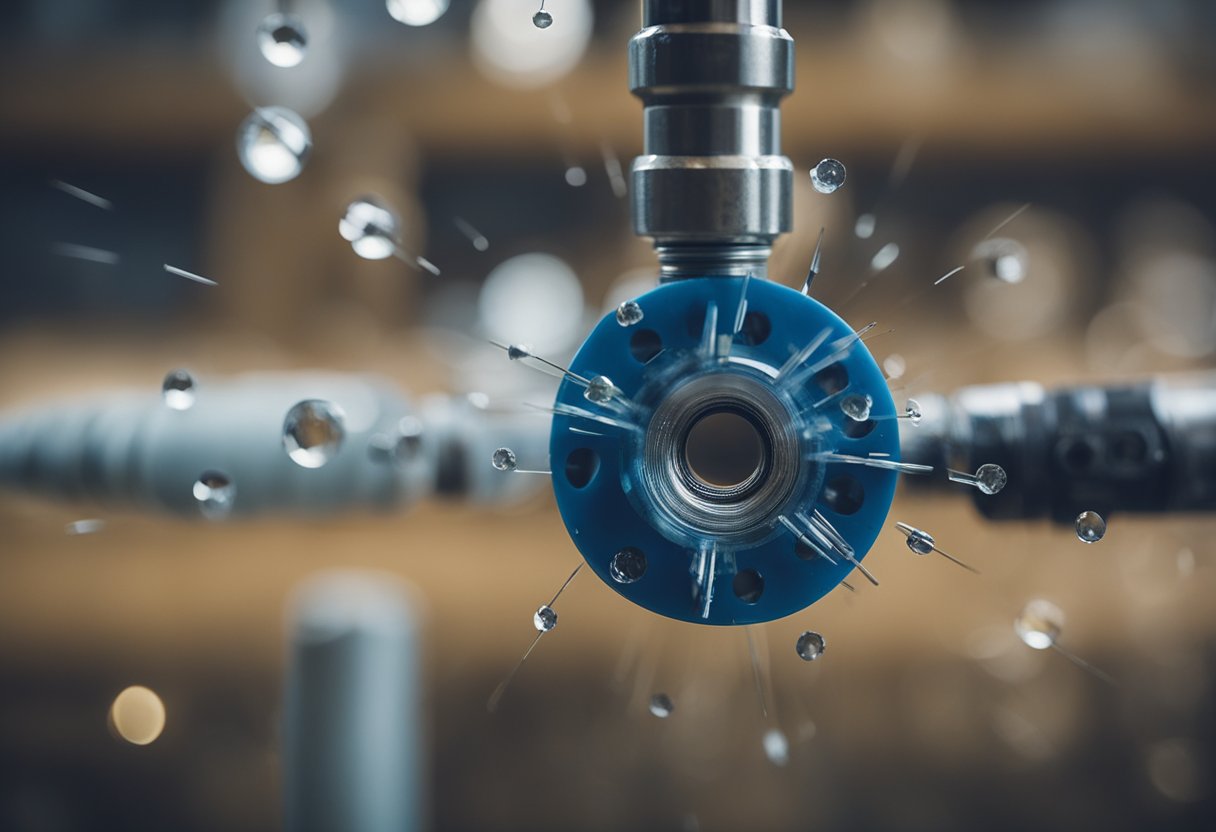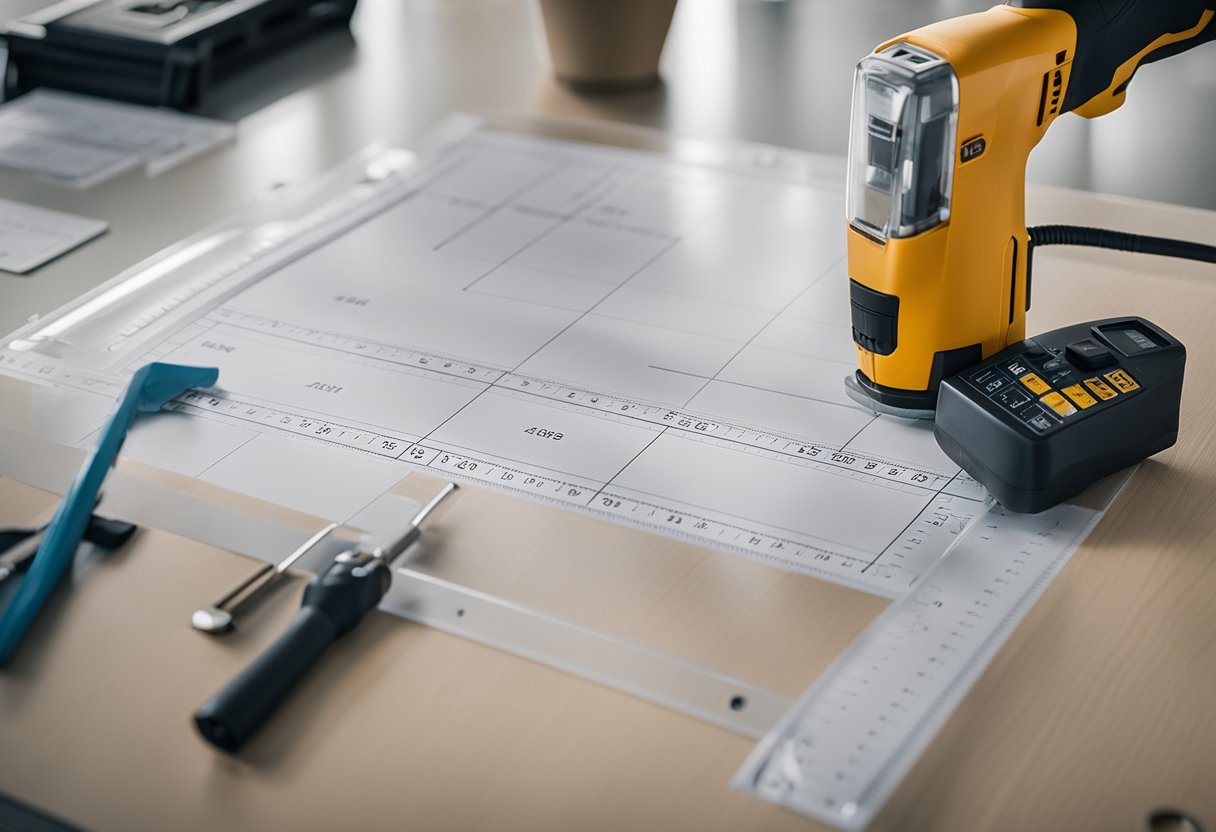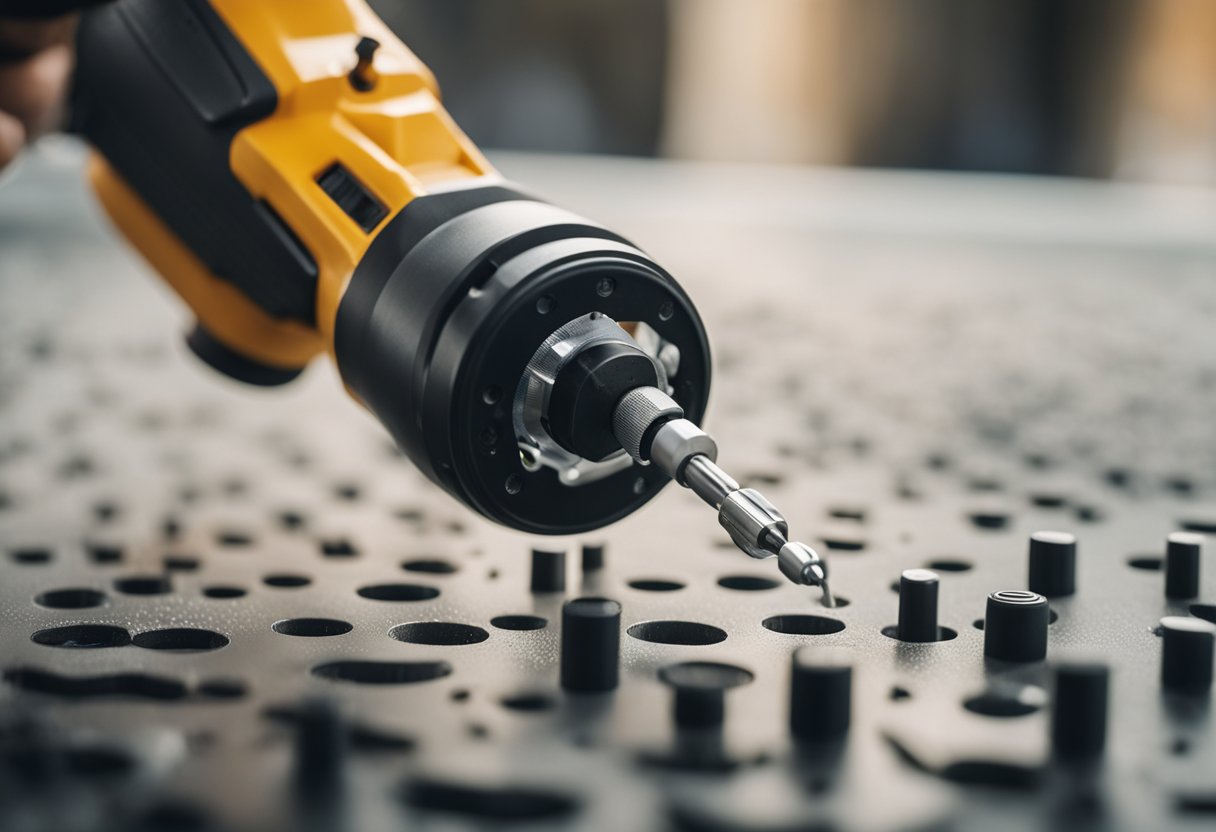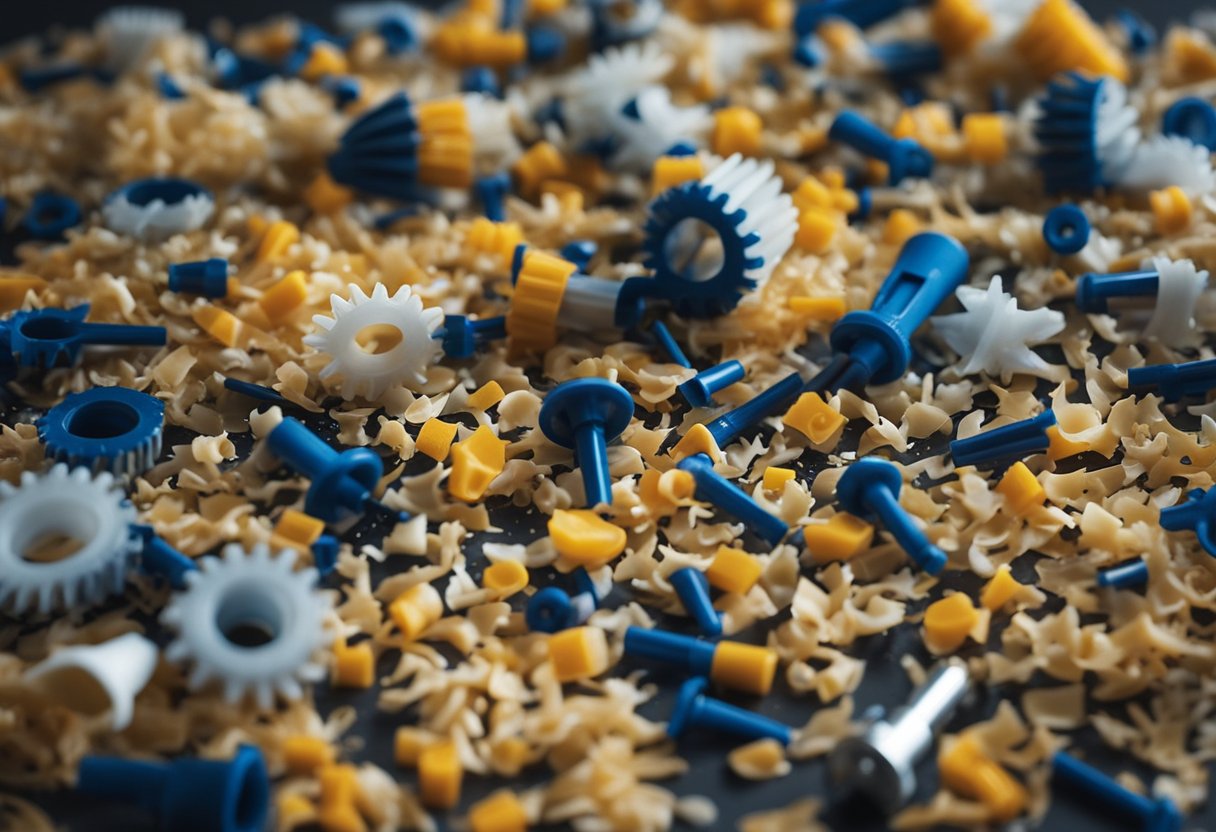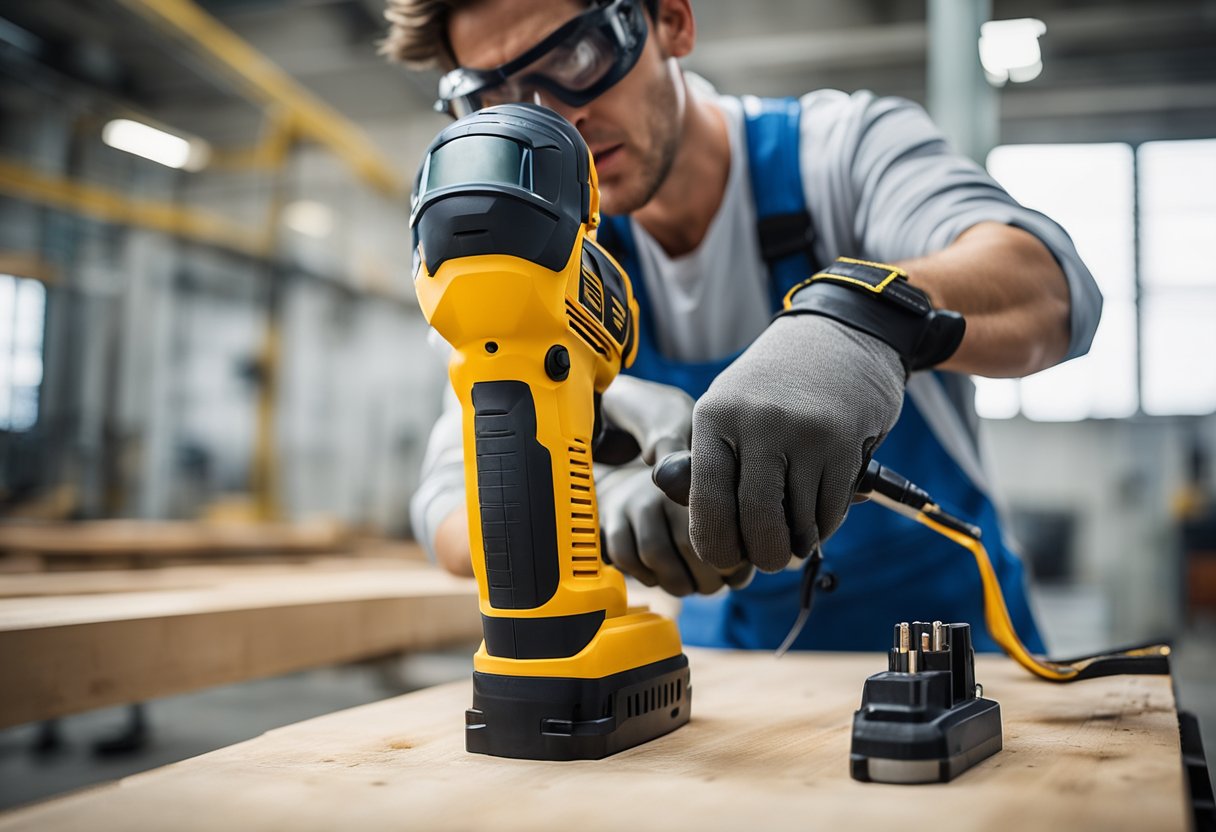Drilling holes in plastic can be a tricky task, especially if you are not familiar with the material. However, with the right tools and techniques, you can easily create clean and precise holes in plastic. In this article, I will guide you through the process of drilling holes in plastic, from understanding the material to finishing and cleanup.
Understanding the material is the first step in drilling holes in plastic. Plastic is a soft and flexible material that requires a different approach than drilling into harder materials like metal or wood. It is crucial to choose the right drill bit for plastic to avoid cracking or chipping the material. Additionally, you need to consider the thickness of the plastic and the size of the hole you want to create.
Essential tools and equipment for drilling holes in plastic include a power drill, a drill bit for plastic, a marker or tape for marking the spot, and clamps to hold the plastic in place. Preparation and marking are crucial to ensure accuracy and precision. You need to mark the spot where you want to drill the hole, clamp the plastic in place, and adjust the drill to the slowest speed to avoid damaging the material.
Key Takeaways
- Understanding the material is crucial in drilling holes in plastic
- Essential tools and equipment include a power drill, a drill bit for plastic, a marker or tape, and clamps
- Preparation and marking are crucial to ensure accuracy and precision
Understanding the Material
https://www.youtube.com/watch?v=AqhonXvh7VY&embed=true
As I begin to drill holes in plastic, it is important to understand the material’s properties and characteristics. Plastic is a synthetic material made of polymers, which means it can have a wide range of properties, including hardness, flexibility, and brittleness. Some common types of plastic include PVC, acrylic, and polycarbonate.
When drilling holes in plastic, it is important to consider the type of plastic you are working with. Hard plastics, such as polycarbonate, are more difficult to drill through than soft plastics, such as PVC. Additionally, brittle materials, such as acrylic, require special attention to ensure the integrity of the material is maintained.
To avoid cracking or damaging the plastic, it is important to choose the appropriate drill bit for the job. Spur-point drill bits, also known as dowel bits, are best suited for drilling holes in plastic. These bits have a sharp point and angle that minimize stress in front of the bit and ensure a clean, smooth cut.
When drilling through plastic, it is important to maintain a slow, steady pace to prevent overheating and melting the material. Additionally, using a clamp to secure the plastic in place can help prevent slipping and ensure accuracy.
Overall, understanding the properties of plastic and choosing the appropriate drilling technique can help ensure a successful project without damaging the material.
Essential Tools and Equipment
https://www.youtube.com/watch?v=GZKt1f74MUI&embed=true
To drill holes in plastic, you will need some essential tools and equipment to make the process easier and more efficient. Here are some of the tools and equipment that I recommend:
Clamp
A clamp is a tool that holds the plastic securely in place while you drill. This is especially important when drilling small or thin pieces of plastic. A clamp will prevent the plastic from moving or slipping while you are drilling, which can cause the drill bit to break or the hole to be uneven.
Drill
A drill is the most important tool you will need for drilling holes in plastic. There are many different types of drills available, but for drilling plastic, a power drill is recommended. A power drill will make the process faster and easier, especially when drilling multiple holes.
Drill Bits
The type of drill bit you use will depend on the type of plastic you are drilling. For most plastics, a wood drill bit or a dowel bit will work well. High-speed steel (HSS) drill bits are also a good option, especially for thicker plastics. Spur-point bits and step drills are also useful for drilling plastic.
Safety Goggles
Safety goggles are essential when drilling plastic. They protect your eyes from flying debris and plastic shavings. Make sure to wear safety goggles that fit properly and provide adequate protection.
Scrap Wood
When drilling plastic, it is important to have a scrap piece of wood underneath the plastic. This will prevent the plastic from cracking or breaking during the drilling process. Place the scrap wood underneath the plastic and drill through both the plastic and the wood.
Overall, these are the essential tools and equipment that I recommend for drilling holes in plastic. Make sure to use the right type of drill bit for the plastic you are drilling and always wear safety goggles to protect your eyes.
Preparation and Marking
Drilling holes in plastic can be tricky, but with proper preparation and marking, you can make the process much easier. Here are the steps to follow:
Step 1: Clean the Surface
Before drilling, make sure the plastic surface is clean and free from any debris or dust. This will help prevent chipping and ensure a smooth drilling process.
Step 2: Measure and Mark the Spot
Using a ruler or measuring tape, measure and mark the spot where you want to drill the hole. It’s important to be precise with your measurements to ensure accuracy. Use a pencil to mark the spot, as it is easier to erase if you make a mistake.
Step 3: Secure the Plastic
To prevent the plastic from moving while you drill, it’s important to secure it to a flat surface using a clamp or support. This will help you maintain a steady hand and ensure that the hole is drilled in the right spot.
Step 4: Use Masking Tape
If you’re worried about the plastic surface cracking or chipping while drilling, you can use masking tape to protect it. Simply place the tape over the spot where you want to drill the hole, and then mark the center point on the tape.
Step 5: Choose the Right Drill Bit
Choosing the right drill bit is crucial to ensure a successful drilling process. For plastic, it’s best to use a twist bit with a sharp point and slow speed. The size of the bit should be slightly smaller than the diameter of the hole you want to make.
By following these steps, you can ensure that your plastic drilling project is successful and accurate.
Drilling Techniques
https://www.youtube.com/watch?v=PTNWg91Z8oo&embed=true
When drilling holes in plastic, it’s important to use the right technique to avoid cracking or damaging the material. Here are some tips to help you drill into plastic effectively:
Clamping and Marking
Before starting the drilling process, it’s important to clamp the plastic securely to a flat surface. This will help prevent the material from slipping or moving during drilling. Once the plastic is clamped, mark the spot where you want to drill the hole using a marker or pencil.
Pilot Hole
When drilling holes in plastic, it’s a good idea to start with a pilot hole. A pilot hole is a small hole that you drill before the actual hole. This will help guide the drill bit and prevent it from slipping or wandering. Use a small twist bit or spur-point bit to create a pilot hole.
Twist Bit
When drilling holes in plastic, use a sharp twist bit with an appropriate size. The tip angle of the twist bit should be between 90 and 120 degrees. The twist bit should be held perpendicular to the surface of the plastic.
Variable Speed Settings
Use a drill with variable speed settings. This will allow you to control the speed of the drill and adjust it according to the resistance of the plastic. Start drilling at a slow speed and gradually increase the speed as you go.
Lubricant
Use a lubricant to reduce friction and heat during the drilling process. This will help prevent the plastic from melting or cracking. Apply the lubricant to the twist bit before drilling.
Peck Drilling
When drilling holes in plastic, use a peck drilling technique. This involves drilling a short distance at a time and then lifting the drill bit out of the hole to clear the chips. This will help prevent the plastic from melting or clogging the hole.
Reverse Setting
When you’re close to completing the hole, switch the drill to the reverse setting. This will help prevent the plastic from cracking or chipping as the drill bit exits the material.
By following these drilling techniques, you can drill holes in plastic without damaging or cracking the material.
Dealing with Potential Issues
When drilling holes in plastic, it is important to be aware of potential issues that may arise. Here are some common issues and how to deal with them:
Cracking and Splintering
One of the most common issues when drilling plastic is cracking and splintering. This is especially true for hard plastics. To avoid this, it is important to use the right drill bit and lubricant, and to drill at a slow speed. It is also a good idea to clamp the plastic securely to a work surface to prevent it from moving during drilling. If cracking or splintering does occur, stop drilling immediately and reposition the drill bit.
Chipping and Debris
Another issue that can arise when drilling plastic is chipping and debris. This can be caused by using the wrong type of drill bit or drilling too quickly. To avoid this, use a sharp drill bit and drill at a slow speed. It is also a good idea to use a vacuum or compressed air to remove plastic shavings and debris as you drill.
Scuff Marks
When drilling plastic, scuff marks can be left behind on the surface. To avoid this, use a fine-grit sandpaper to smooth the surface before drilling. It is also important to use a lubricant to reduce friction and prevent scuff marks from forming.
Conclusion
By being aware of these potential issues and taking the necessary precautions, you can successfully drill holes in plastic without encountering any problems. Remember to use the right drill bit and lubricant, drill at a slow speed, clamp the plastic securely, and remove debris as you drill.
Post-Drilling Cleanup and Finishing
Once you have successfully drilled a hole in your plastic material, it is important to clean up and finish the job properly. The following steps will help you achieve a professional-looking result.
Clean the Area
After drilling, there may be debris and plastic shavings left around the hole. Use a clean cloth or brush to remove any debris from the area. It is important to clean the area thoroughly to ensure that the hole is free from any obstructions.
Lubricate the Hole
If you used a lubricant during drilling, make sure to wipe any excess lubricant from the hole. Leaving excess lubricant can attract dirt and debris, which can cause problems later on.
Sand the Edges
To achieve a clean finish, it is recommended to sand the edges of the hole. Use a fine-grit sandpaper to sand the edges of the hole, being careful not to scratch the surrounding plastic. Sanding the edges will also remove any burrs or rough edges left by the drill bit.
File the Edges
If the hole diameter is not perfect, you may need to file the edges of the hole to achieve the desired size. Use a small file to carefully file away any excess plastic until the hole is the correct size.
By following these steps, you can achieve a professional-looking result when drilling holes in plastic. It is important to take your time and be patient during the cleanup and finishing process to ensure the best possible outcome.
Safety Considerations
As with any DIY project, safety should always be a top priority when drilling holes in plastic. Here are some safety considerations to keep in mind:
Wear Safety Goggles
When drilling plastic, small pieces can fly off and cause eye injuries. Therefore, it is essential to wear safety goggles to protect your eyes from debris. Make sure the goggles fit snugly and comfortably to prevent them from slipping off during drilling.
Secure the Plastic with a Clamp
To prevent the plastic from moving while drilling, it is important to secure it with a clamp. This will help you drill a precise hole without any hassle. Make sure the clamp is sturdy and does not damage the plastic.
Choose the Right Drill Bit
Selecting the right drill bit is crucial when drilling plastic. A high-speed steel (HSS) or cobalt bit is recommended for plastic as they provide better resistance to heat and wear. Additionally, the shank of the bit should fit snugly in the drill chuck to prevent it from slipping during drilling.
Use Lubrication or a Coolant
Using a lubricant or coolant can help reduce friction and heat during drilling, which can cause the plastic to melt or crack. You can use cutting oil, water, or a specialized coolant designed for plastic drilling.
By following these safety considerations, you can ensure a safe and successful drilling experience when working with plastic.
Advanced Techniques and Tips
https://www.youtube.com/watch?v=pNzuX1Y6sJk&embed=true
When it comes to drilling holes in plastic, there are a few advanced techniques and tips that can make the process easier and more efficient. Here are some of the most important ones:
Use the Right Drill Bit
Choosing the right drill bit is crucial when drilling into plastic. For softer plastics, a twist bit or spur-point bit can work well, while harder plastics may require a cobalt carbide or solid carbide bit. It’s important to select a bit that is the appropriate size for the hole diameter you need, and to ensure that it is sharp and in good condition.
Use Lubricant
Using a lubricant can help reduce friction and heat buildup when drilling into plastic, which can help prevent chipping, cracking, or melting. You can use a commercial cutting oil or coolant, or even just a bit of water or dish soap. Be sure to apply the lubricant evenly and avoid using too much pressure.
Secure the Plastic
To prevent the plastic from moving or vibrating while you drill, it’s important to secure it firmly to a bench or work surface. You can use clamps, tape, or even screws or dowels to hold the plastic in place. It’s also a good idea to support the back of the plastic with a piece of scrap wood to prevent splintering or cracking.
Mark the Spot
Before you start drilling, it’s important to mark the spot where you want the hole to be. Use a ruler or measuring tape to ensure that the hole is in the right position and at the right depth. You can use a pencil or masking tape to mark the spot, or even a center punch to create a small indentation that will help guide the drill bit.
Control the Speed
When drilling into plastic, it’s important to use the right speed setting on your drill. High-speed steel (HSS) bits work best at medium to high speeds, while cobalt and solid carbide bits may require slower speeds. Be sure to adjust the variable speed knob on your drill to the appropriate setting for the bit you’re using, and avoid using too much pressure or forcing the bit through the plastic.
Clean Up Debris
After drilling, it’s important to clean up any plastic shavings or debris that may have accumulated around the hole. You can use a file or sandpaper to smooth any rough edges or scuff marks, and ensure that the integrity of the plastic is still intact. With these advanced techniques and tips, you can drill a hole in plastic without chipping, cracking, or damaging the material.
Frequently Asked Questions
https://www.youtube.com/watch?v=C6Qkf-kB3sA&embed=true
What is the best tool for cutting holes in plastic?
The best tool for cutting holes in plastic is a drill. A drill can make clean and precise holes in plastic. Other tools such as a jigsaw or a hole saw can also be used, but a drill is the most versatile and widely available.
How do you drill a large hole in plastic?
To drill a large hole in plastic, you can use a hole saw or a step drill bit. A hole saw is a circular saw blade that is attached to a drill and can cut larger holes in plastic. A step drill bit is a drill bit that can make holes of different sizes by gradually widening the hole.
What kind of drill bit should I use for plastic?
For drilling holes in plastic, you should use a drill bit made of high-speed steel or cobalt. These types of drill bits are durable and can cut through plastic without dulling quickly. Avoid using drill bits made of carbon steel or titanium as they may not be effective for cutting plastic.
What is the drill setting for plastic?
The drill setting for plastic should be on a low speed. This will prevent the plastic from melting or cracking due to the heat generated by the drill. A low speed will also ensure that the drill bit cuts through the plastic cleanly and smoothly.
Can a wood drill bit be used on plastic?
A wood drill bit can be used on plastic, but it may not be the most effective option. Wood drill bits are designed to cut through wood and may not be able to cut through plastic cleanly. It is recommended to use a drill bit made of high-speed steel or cobalt for drilling holes in plastic.
What are the benefits of using a step drill bit for plastic?
Using a step drill bit for plastic has several benefits. Firstly, it can make holes of different sizes by gradually widening the hole. This can save time and effort compared to using multiple drill bits of different sizes. Secondly, a step drill bit can create clean and precise holes in plastic without cracking or damaging the material.

Hi, I’m Sal Muller of Tooltrip.com. My DIY experience led me to understand essential power tools for home projects. Tooltrip.com guides enthusiasts and professionals in choosing right tools for any job. I provide concise top tool reviews for easier, efficient DIY.

